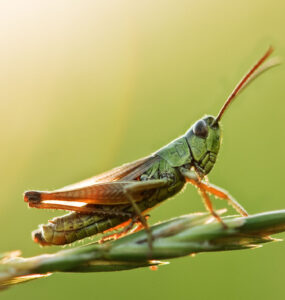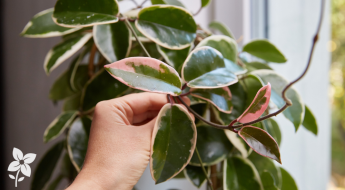Scarlet Lily Beetle
by Rob Sproule
Whether it’s their ease of growth, overwhelming flowers or just because we’re surprised that such a stunning plant can survive here, Canadians are passionate about lilies. They are the operatic prima donnas of the perennial garden, and they’re under threat by an unwelcome intruder.
The Scarlet Lily Beetle, alias red lily or lily leaf beetle, is a European native that hitched a ride to Canada on lily bulbs in the mid 1940s. Over the decades it’s settled westward to as far as Alberta.
Feasting on all species of lilies and fritillarias, (although not daylilies), lily beetles are quickly chewing their way into Canadian gardening infamy. They’re virtuosos at decimating lily collections that have been amassed over decades in record time, devouring leaves, stems, flowers, and all.
Life Cycle
Lily beetles spend the winter quite comfortably cuddled into your perennial bed soil. After waking up in the spring it doesn’t take long to start reproducing, with females laying up to 450 eggs a season in batches of a dozen. The yellowish orange eggs hide under lily leaves, usually tucked against the midrib.
The larva are voracious and spend a few weeks chomping lilies while covered in a pile of their own excrement (if it’s to camouflage as bird droppings, it’s very convincing). Once they’ve eaten their fill of your prize collection they drop to the ground and pupate in a cocoon of dirt and saliva. Enchanting creatures.
How to Spot It
Vigilant gardeners (as most lily-lovers are) will first notice brown, sticky frass clumping on the leaves’ undersides. Those same leaves will have the daylight chewed out of them shortly after.
The beetles themselves are an unmistakable bright red with black undersides; they’re shaped like a futuristic plant-eating robot. They can be confused with spotless ladybugs, but are more narrow and just plain mean looking than the beneficial insects.
How to Fight
While there are plenty of parasitic wasps in Europe to feed on them, lily beetles have no natural enemies in North America so our species is the only one who can stop them. As such they spread rapidly and will move quickly from ornamental plants to wild lilies, where they can do massive damage.
Before you plant your spring lily bulbs, inspect them for anything suspicious. This is their favourite mode of getting into your yard.
The most effective control is also the most laborious; inspect your lilies regularly and pick them off manually. If you can’t stomach crushing them, drop them in a bucket of soapy water. Sprinkling diatomaceous earth on them will dry them up but you’ll need to hit the leaves’ undersides.
If you’re persistent (to the tune of the every 5-7 days), Neem oil will kill young larvae. Potent chemicals like Malathion will work, but please think twice as lilies are favourite haunts for bees and strong chemicals could be fatal.
Be forewarned that, when threatened, lily beetles will often play dead. As you close in with your pincers, except it drop to the ground, put its legs in the air and wait for you to go away. Squish it anyway. They will also emit a high pitched squeak as you get close, which can be fairly unnerving.
















